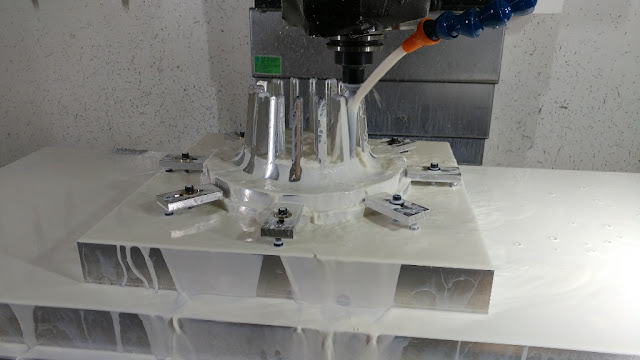LPP Fusion working on inpurities for Tungsten anode and in the summer will have experiments with new Beryllium Cathode
by noreply@blogger.com (brian wang) from NextBigFuture.com on (#2GWBV)
Hardric Labs in Massachusetts has reported to LPPFusion that its work on machining the new beryllium cathode is nearing completion and they expect to ship the finished piece in early March, only a few weeks behind their initial schedule. Since the beryllium anodes have already been received at the Middlesex NJ lab, we will soon have a complete set of beryllium electrodes ready for our next set of experiments. This will be an important milestone for the project, as our effort to obtain the beryllium electrodes began in mid-2014, as soon as our crowdfunding effort had raised the money needed for the new set. Beryllium is crucial to the next step in the experiment for two reasons. First, as a light element with an atomic charge, or "z", of only 4, it will eliminate any high-z impurities in the plasma, optimizing FF-1's performance. Second, beryllium is highly transparent to x-rays, so will be much better able to withstand the heavy x-ray flux from the plasmoid as we increase fusion yields.
Once our current experiments with tungsten are complete, we will still need two or three months to prepare for the beryllium experiments. For one thing, our vacuum chamber will need a new coating of titanium oxide to coat over any remaining tungsten in the chamber. But with the electrodes soon to be in hand, we can be confident that the next set of experiments will be under way in the summer.
The Tungsten experiments have slow going because of the need to remove impurities from the fusion chamber.
 Beryllium cathode for next experiment being machined at Hardric Lab. In Mass
Beryllium cathode for next experiment being machined at Hardric Lab. In Mass
If this shoestring budget effort were to succeed they would be able to create superlow cost energy from nuclear fusion.
Read more










Once our current experiments with tungsten are complete, we will still need two or three months to prepare for the beryllium experiments. For one thing, our vacuum chamber will need a new coating of titanium oxide to coat over any remaining tungsten in the chamber. But with the electrodes soon to be in hand, we can be confident that the next set of experiments will be under way in the summer.
The Tungsten experiments have slow going because of the need to remove impurities from the fusion chamber.
 Beryllium cathode for next experiment being machined at Hardric Lab. In Mass
Beryllium cathode for next experiment being machined at Hardric Lab. In MassIf this shoestring budget effort were to succeed they would be able to create superlow cost energy from nuclear fusion.
Read more